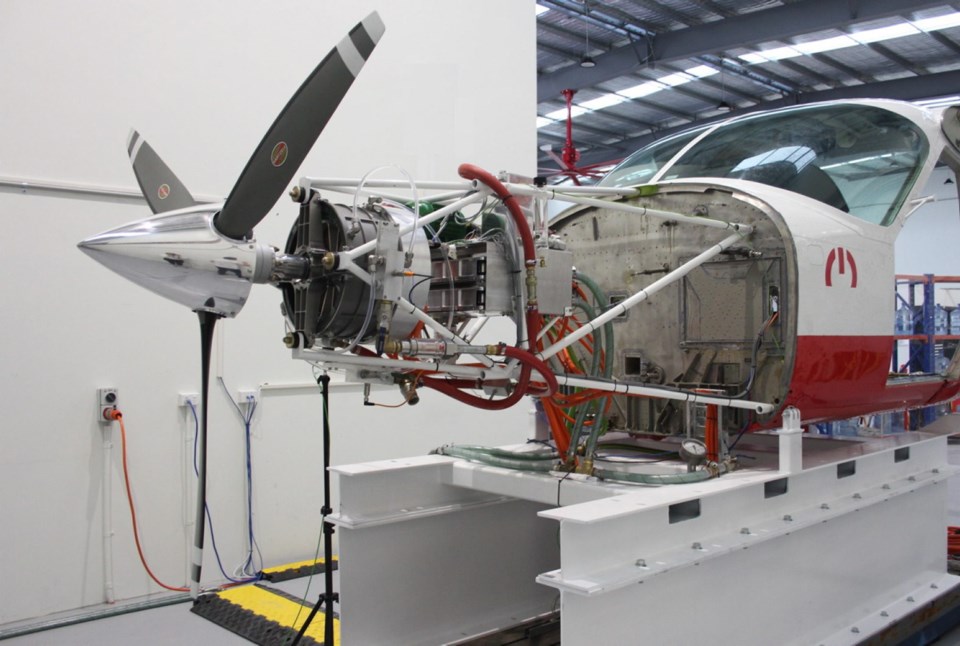The second day of a three-day tour of Washington state and California to discuss economic cooperation and investment opportunities has left B.C.’s finance minister stunned.
Carole James conceded a visit to magniX facilities near Seattle on Thursday left her marvelling at what is possible.
“It is extraordinary,” said James, standing in an airplane hangar where magniX was testing the electric engine it will be installing in a Harbour Air seaplane later this year. “It really has been breathtaking how quickly the technology is moving and the opportunity it presents.”
This year, magniX and Harbour Air announced they would be converting one of the airline’s planes to an electric engine, creating what is believed to be the first commercial aircraft to be powered by an electric propulsion system.
The converted six-passenger DHC-2 de Havilland Beaver will feature a zero-emission, 750-horsepower motor.
“Everything is on schedule,” said Randy Wright, president of Harbour Air, who was on hand for James’ visit. “The plane is currently in Richmond being retrofitted and the engine is on the way up from Australia and should be here in August and we are on schedule to test fly in November.”
The first commercial flight is still as long as two years away, but Harbour Air has committed to eventually convert its entire fleet of 42 planes. “This is very cutting edge and very exciting,” said Wright.
James agreed, noting to think the float planes buzzing in and out of the Inner Harbour in Victoria could “actually be emission free, could actually reduce noise and the smell of fuel in the neighbourhood and play a part in climate action is really quite extraordinary.”
Roei Ganzarski, chief executive of magniX, said the company is driven by the extraordinary despite the skepticism that has greeted the project from some circles.
“Humans are skeptical or optimistic by nature. We are trying to bring back that optimistic-glass-completely-full view that aviation had back in the 1930s, ’40s and ’50s with guys like Howard Hughes, Bill Boeing and (James) McDonnell and (Donald) Douglas — folks who said ‘if we want to make a change we have to push forward and make it, skeptics beware.’ ”
The company is building off the back of groups such as Tesla, which pushed past skepticism to create an electric car with power and extended range.
“No one here is claiming an electric plane can do what a gas-based plane can do from a range perspective, but for someone like Harbour Air that flies shorter routes, electric allows them to do it with lower costs, zero fuel and zero emissions, so why not do it,” he said.
Ganzarski said they have mastered the challenge of creating a propulsion system that provides enough power without too much weight to allow an aircraft to get into the air. Their next challenge is getting as much power as possible from a battery.
“In today’s battery on a converted Beaver we can get half an hour flight time and half an hour reserve,” he said. “By the time we get to 2025, it could be more than double that.”
That’s why Harbour Air, the largest seaplane airline in North America with 500,000 passengers and 30,000 commercial flights every year, is an ideal test for the system. The flight from Victoria to Vancouver takes 35 minutes.
The company’s 12 routes cover centres in close proximity such as Victoria, Vancouver and Seattle.
James said the partnership between Washington-based magniX and B.C.’s Harbour Air is a good example of the kind of investment she would like to see made between the two jurisdictions. She said in her meetings so far there are strong indications investors and governments understand both regions can win if there’s more cooperation and there has been common ground on the need for improved movement of talent and capital between the jurisdictions.



